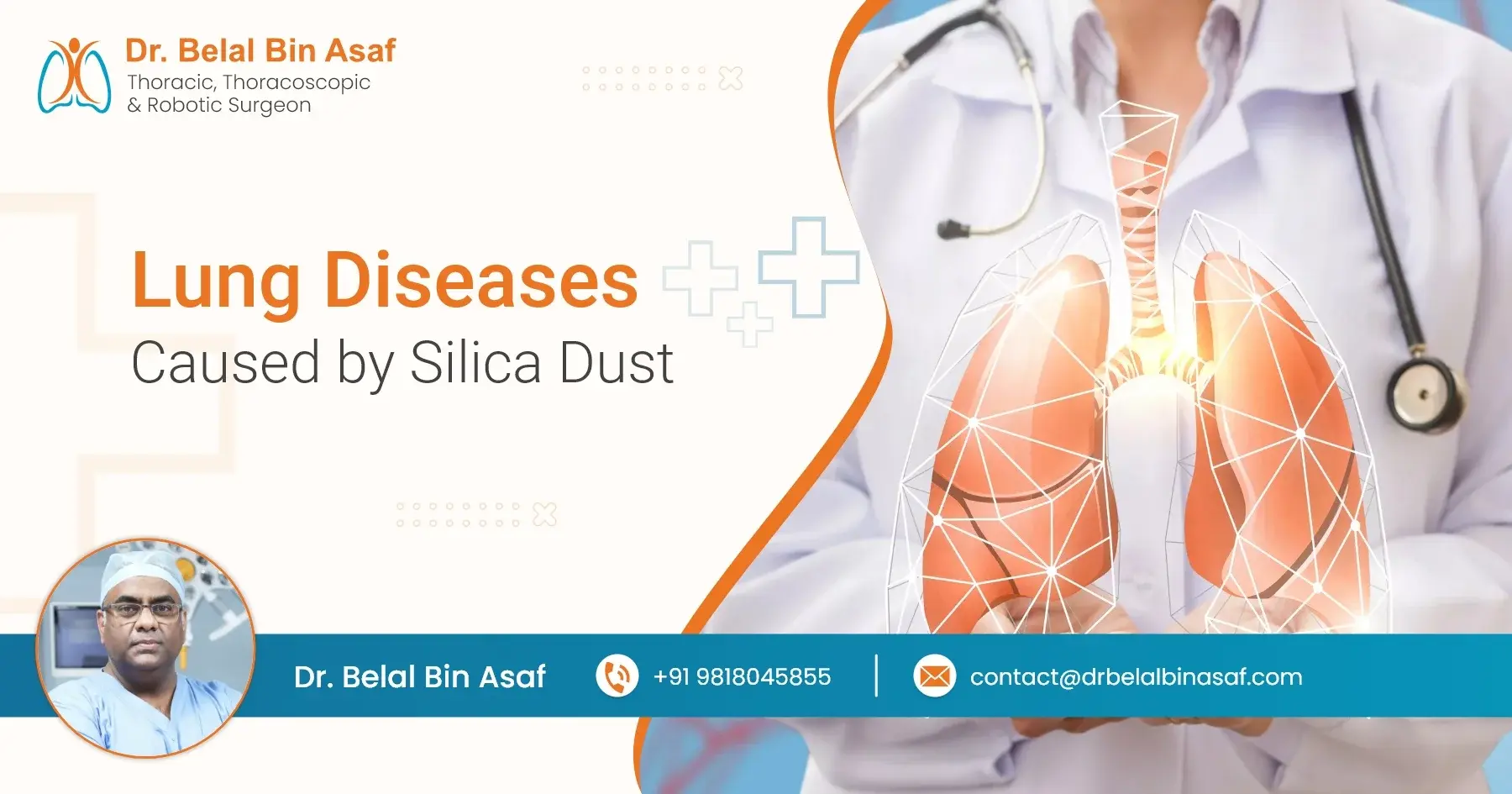Contents
What is Silica Dust?
Silica is a natural material found in varying amounts in most rocks, sand and clay. It is a major constituent of construction materials such as bricks, tiles, concrete and mortar.
Many common construction tasks generate silica dust. These include cutting, drilling, grinding, sandblasting, and polishing. Some of these dust particles are very fine and can get deposited in Lungs. These fine dust particles are known as respirable crystalline silica (RCS) and are too fine to see with normal eyes. In common language, It is called silica or silica dust. Silica dust can also be found in the following products:
- bricks
- tiles
- concrete
- some plastic material.
Mining, tunneling, quarrying, sculpturing, foundries, and manufacturing of building construction materials are some of the key industries in which workers are exposed to silica dust. Fine silica dust has a devastating impact on lung health and poses a serious health risk when its dust particles are inhaled. In this blog, we’ll delve into the concerning effects of silica dust on lung health and explore the importance of awareness and prevention.
Diseases caused by Silica dust
Silicosis: Long-term exposure to silica dust leads to a progressive and incurable lung disease called Silicosis. It is caused by the fine silica dust particles that get deposited in lung tissue and cause inflammation that leads to scarring and hardening of lung tissue, known as fibrosis. This impairs normal respiratory function and causes symptoms like cough, shortness of breath, and chest pain. The condition may continue to get worse, and symptoms may become more severe. Some patients may eventually find simple activities such as walking or climbing stairs very difficult and may be largely confined to their house or bed. The condition can ultimately be fatal if the lungs stop working properly (respiratory failure) or serious complications develop.
Lung Cancer: Prolonged exposure to silica dust has been linked to an increased risk of lung cancer. Inhalation of silica particles can trigger genetic mutations and cellular damage, contributing to the development of malignancies within the lungs.
Chronic Obstructive Pulmonary Disease (COPD): Silica exposure is a significant risk factor for COPD, a group of progressive lung diseases including chronic bronchitis and emphysema. The inflammatory response induced by silica dust can lead to airway obstruction, reduced lung function, and respiratory distress.
Prevention and Protection of Lung Diseases:
Prevention is the key step, and protection from exposure is of paramount importance in safeguarding individuals with occupational exposure. Stringent safety measures and adherence to regulatory guidelines are a must to minimise exposure levels. This may include the use of engineering controls, personal protective equipment (such as respirators), and proper ventilation systems.
However, the most important factor in achieving long term control of silica dust related disease is awareness about the disease and its harmful side effects. With a population of 1.43 billion individuals, India has become the world’s most populous country. It is also positioned as the third most sought-after manufacturing destination globally. By the year 2025, it is projected that India will house approximately 25% of the global working population (~ 0.8 billion), a majority of whom, roughly 92%, will be engaged in the informal sector. Majority of the occupational exposure unfortunately occurs in this informal sector. In 2015-16, an estimated 11.5 million workers in India were employed in occupations associated with silica dust, a number expected to surge to 52 million by the year 2025-26. According to recent estimates, the construction industry employs an approximate workforce of nearly 60 million workers in India. This imposes a huge challenge on the healthcare system of India. Trying to prevent and control this deadly disease poses many challenges such as an unregulated informal sector, diagnostic difficulties, absence of a surveillance mechanism, inadequate staff, and a lack of awareness. Apart from routine dust control measures, several initiatives may be undertaken to control silicosis, including raising awareness, building capacity, improving health systems to treat silicosis patients, integrating silicosis control with tuberculosis control, and strict adherence to statutory regulations .
Furthermore, raising awareness among workers about the hazards of silica dust and providing comprehensive training on safe work practices are essential steps in preventing occupational lung diseases. Regular health screenings and surveillance programs can also help identify early signs of lung damage and facilitate timely intervention.
Conclusion:
Lung diseases caused by silica dust represent a significant public health concern, particularly in industries where exposure is prevalent. As a thoracic surgeon, I urge individuals and organisations to prioritise preventive measures and advocate for policies that prioritise worker safety. By addressing the silent threat of silica-related lung diseases, we can mitigate the burden on individuals, families, and healthcare systems, ultimately promoting healthier workplaces and communities.
For more information on lung health, visit our website [www.drbelalbinasaf.com] and stay tuned for future updates and insights. Together, let’s breathe easier and build a safer tomorrow.
References
- TeamLease. India labour report 2009 [Internet]. 2009. Available from: https://www.teamleasegroup.com/sites/default/files/resources/teamlease_labourreport2009.pdf
- International Labour Organization (ILO). World employment and social outlook: Trends 2020 [Internet]. 2020. Available from: https://www.ilo.org/wcmsp5/groups/public/—dgreports/—dcomm/—publ/documents/publication/wcms_734479.pdf.
- International Labour Organization. Decent Work Country Programme for India (2018–2022) [Internet]. New Delhi: ILO Decent Work Team for South Asia and Country Office for India. ; 2018. Available from: https://www.ilo.org/wcmsp5/groups/public/—asia/—ro-bangkok/—sro-new_delhi/documents/publication/wcms_650119.pdf.
- Rees D, Murray J. Silica. In: Newman TA, Cullinan P, Blanc P, Pickering A, editors. Park Occup Lung Disorder. 4th ed. Boca Raton: CRC Press; 2016. pp. 187–205.
- Chand R, Singh J. Workforce changes and employment: some findings from PLFS data series [Internet]. NITI Aayog Discuss. Pap. New Delhi: Government of India; 2022. Available from: https://www.niti.gov.in/sites/default/files/2022-04/Discussion_Paper_on_Workforce_05042022.pdf.

